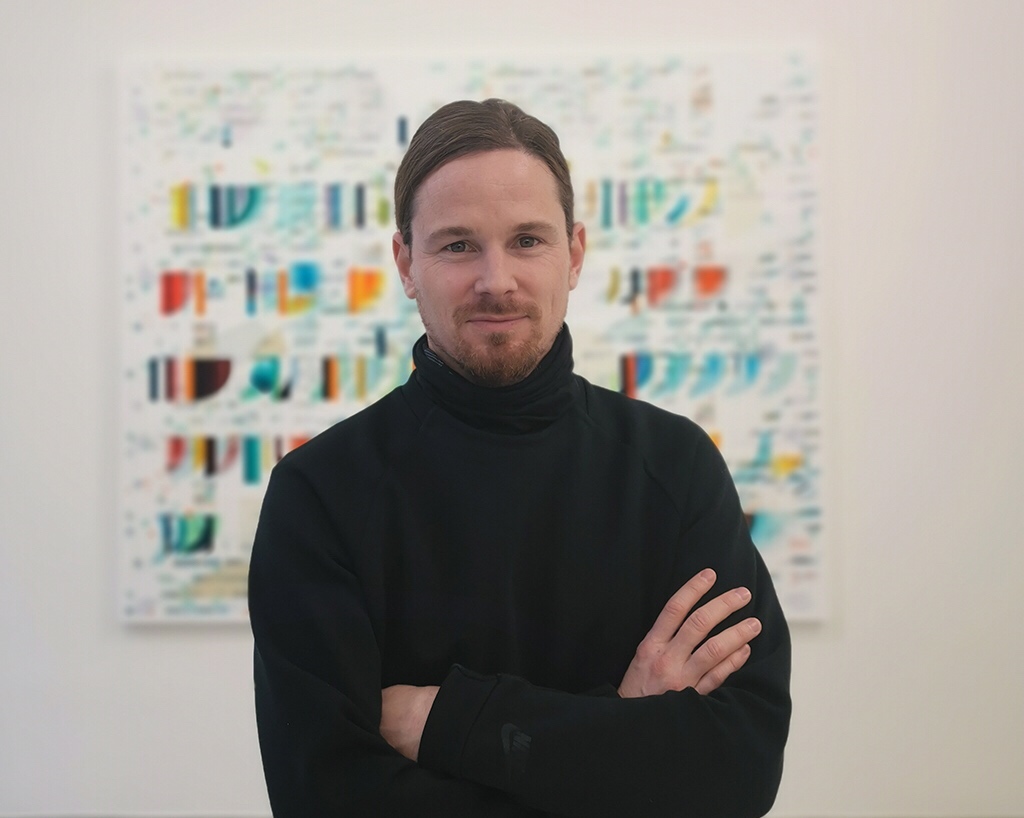
Mr. René Meile
From a primary-level staff member to the Co-Director in charge of business of Asia in Galerie Urs Meile, Mr. René Meile has witnessed the history of Galerie Urs Meile and the developments and prosperity of contemporary Chinese Art since he came to Beijing with his father, Urs Meile. As one of the earliest foreign-funded galleries landed in China, Galerie Urs Meile always has its own choices and judgment in exhibition development and artistic creations. The exhibition “Qiu Shihua: Empty/Not Empty” just opened last weekend at Galerie Urs Meile in Beijing will continue until the opening of “Gallery Weekend Beijing”. Mr. René Meile expressed that this exhibition did not only offer a celebration on the 80th birthday of Qiu Shihua, but it also confidently showed support for the post-pandemic art circle in Beijing, everything will return to the normal track as soon as possible. During the pandemic spread, CAFA ART INFO has also conducted a special interview with Mr. René Meile to discuss the inseparable relations between creation, exhibition, research and collection.
Interviewee: Mr. René Meile
Interviewer & Editor: Sue Wang
Interview Date: March 24, 2020
CAFA ART INFO: As one of the earliest foreign-funded galleries involved in the Chinese contemporary art scene, Galerie Urs Meile meets the expectations of most people in the field of art, having professional knowledge and appreciation, growing together with artists so that the gallery represents and brings to sponsorship to artists who have not received an enthusiastic response from the art market; as the current owner and director of Galerie Urs Meile, what are the position and goal for your operation? Which of the following three points do you think is the most important? Academic significance and status, market success, support and recognition from collectors?
Mr. René Meile: Historically, it has quite often been collectors, patrons of the arts, which supported artists substantially and helped them to establish a position in an art historical context. Collectors quite often can use their insight and power to support and influence academic research.
However, as the motives of academic research and of collecting are supposed to be independent from one another, it is difficult to compare. They are part of the same ecosystem, which wouldn’t function if either side would be predominant. In the long term, both the artist and academics benefit from the support and recognition of individual collectors and a gallery acts as a connecting piece in between.

Exhibition View, Wang Xingwei, “The Code of Physiognomy”, Galerie Urs Meile, Beijing, China
CAFA ART INFO: Galerie Urs Meile has settled its space at Caochangdi, Beijing in 2005, and you are the third generation owner of your family’s business. The current collectors and market have changed significantly when compared to the circumstances when your father took charge of the gallery, do you agree with the opinion that “collectors who truly understand Chinese contemporary art are decreasing?” What impact do you think this will have on the development of galleries in Beijing?
Mr. René Meile: I would not agree in saying “collectors who truly understand Chinese contemporary art are decreasing”.
The circumstances have changed dramatically since my father first came here in the mid 90’s. China has a completely different relevance in the world - economically, politically and increasingly also culturally. The number of artists, galleries, museums, curators or writers has increased exponentially. Above all, technological development has made an infinite amount of information simultaneously accessible to (almost) everyone.
I doubt that ‘one’ can truly understand Chinese contemporary art and I don’t think that this is a collector’s assignment. In my eyes, a collector is a free spirit who is driven by his curiosity, who’s drawn to creative people, someone who wants to learn more about himself through art. Collecting generally can be seen as a process of self-identification. Through his own collection a collector expresses how he sees himself and the world around him rather than a description of how the world actually is. This is also one of the differences to academic research where impartiality and rationality are inevitable.
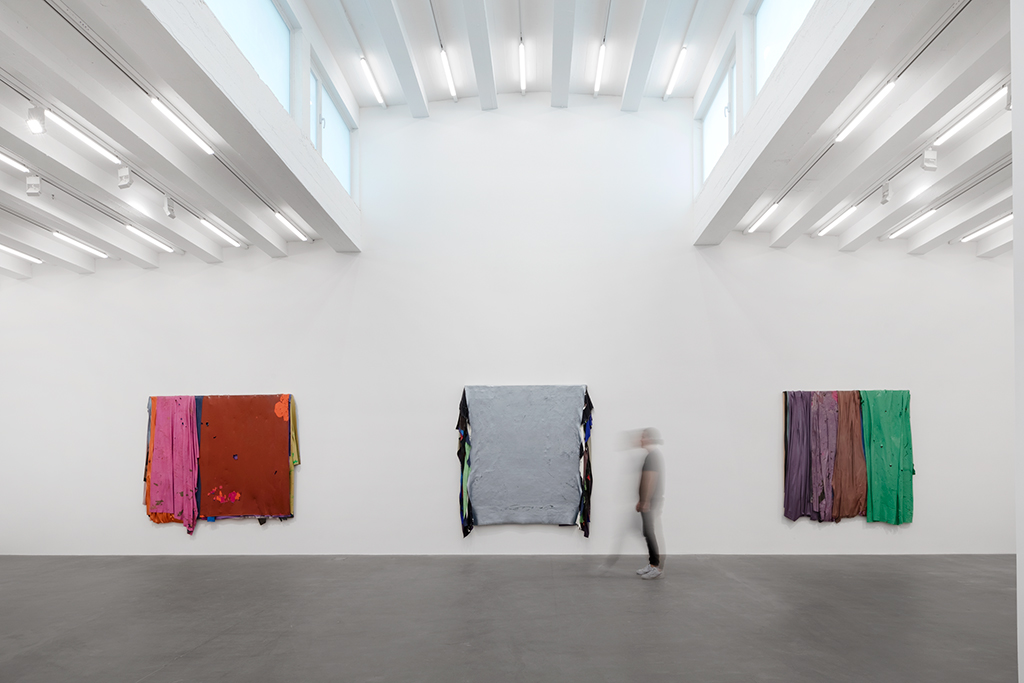
Exhibition View, Ju Ting, “Scales”, Galerie Urs Meile, Beijing, China
CAFA ART INFO: COVID-19 suddenly began to spread in China after the Chinese New Year of 2020 and it has now become a pandemic. Where were you when the epidemic broke out? Has your work and life been affected? What do people living around you think about it?
Mr. René Meile: I was in Switzerland when it broke out. It affects everyone’s life especially in a globalized world we live in. It makes people feel vulnerable and scared no matter where on this world they come from.
CAFA ART INFO: Due to the impact of the pandemic, activities such as Gallery Week in 798 Art District and Art Basel Hong Kong were temporarily postponed. There is a pessimistic view that this will “add insult to injury” for the art market in China, what do you think of the influence of the pandemic on the world of the contemporary Chinese art market?
Mr. René Meile: I think it’s too early to evaluate the impact of this pandemic. It seems to have the potential to affect our way of living permanently. My hope is that it will leave behind an impression on people’s attitude towards life, its fragility and the exhaustibility of our nature.
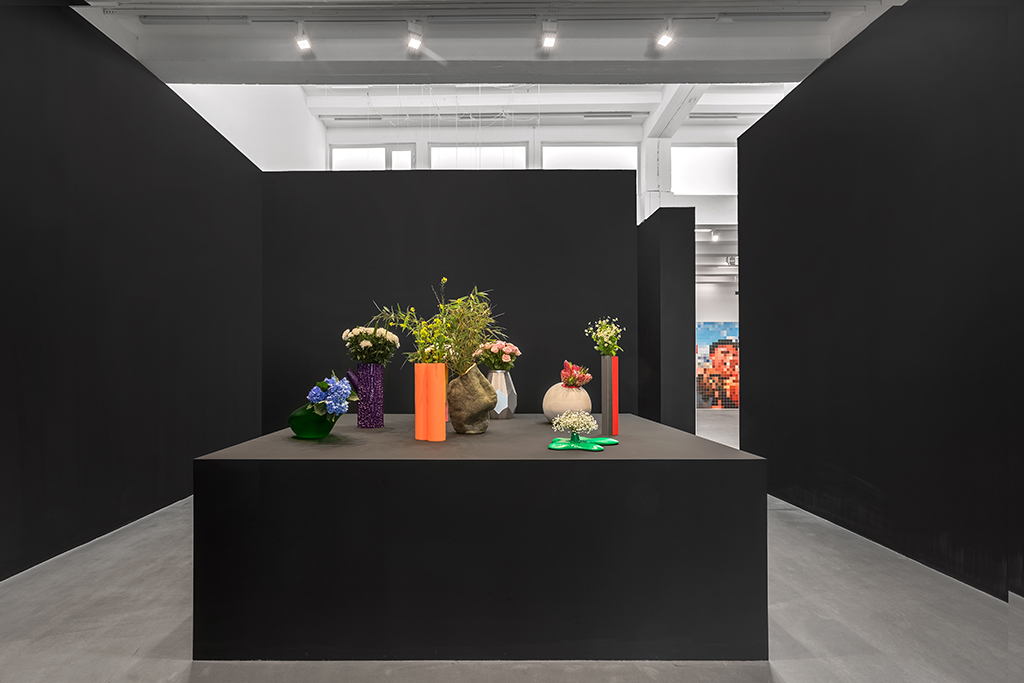
Exhibition View, Tobias Rehberger, “Blind and a little less”, Galerie Urs Meile, Beijing, China
CAFA ART INFO: The art world is now changing very fast. In addition to concrete exhibitions at galleries, there are online exhibitions. When considering the speed of exhibitions, there is also a polarizing tendency: on the one hand, some galleries insist on maintaining quality with their traditional pace; on the other hand, young artists are eager to become famous and the their art creations are becoming faster and faster. In such an environment, how can Galerie Urs Meile maintain its own development and exhibition planning?
Mr. René Meile: Technological development has created many new rooms. Artists naturally want to explore these rooms and their possibilities. The question is how are these new forms and the tremendous speed they are developed digested by the community that is carrying it?
The development and exhibition planning of the gallery depends very much on the rhythm of artists to develop new works. Some have a more steady output while others have long (but very important) periods of contemplation with no physical output. One job of a gallery is to sync the individual rhythms of each artist with the market. New technology such as online exhibitions can help also a gallery to have faster access to a bigger audience with more comprehensive information - if it’s used in an intelligent way. The content of current online exhibitions is quite often very trivial and rather leads to an information overload than an additional value. It doesn’t connect with the audience.
The creation of art can not be accelerated and the presentation of art, no matter if it’s in a physical or online exhibition space, is a delicate process that needs time to adapt to new technological possibilities.
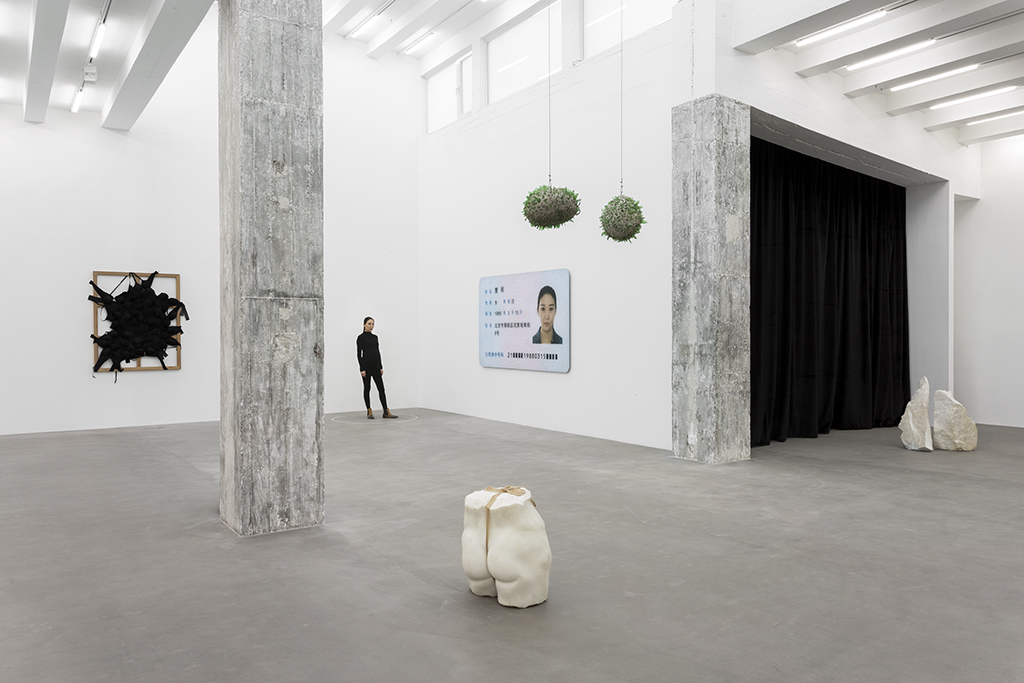
Exhibition View, Cao Yu, “I Have an Hourglass Waist”, Galerie Urs Meile, Beijing, China
CAFA ART INFO: Hu Qingyan and Cao Yu, are two artists represented by Galerie Urs Meile, they graduated from the Sculpture Department of the Central Academy of Fine Arts. How did you learn about their work and establish a collaboration? How do you make choices when you preview the future direction of the artists? Will Galerie Urs Meile interfere with represented artists?
Mr. René Meile: Over the years each individual creates a microcosm with a unique group of like-minded people around itself - so does a gallery. An artist and a gallery have usually been acquainted with each other already before they start collaborating. They share similar ideas about art and appreciate each other’s work and attitude. So it happened with Hu Qingyan and Cao Yu later on. We regard both of their work as a unique contribution to the development of contemporary art, in China but as well internationally. They bring along both, an absolute commitment to be an artist (which often times means to sacrifice) and a professional attitude. These are all important indicators to predict a future development of an artist.
Theoretically, the unique microcosm an artist and a gallery create together prevents from actively interfering with other artists or galleries. Also, the art scene and the market often does not approve of this. But of course in reality it does happen as we all know.
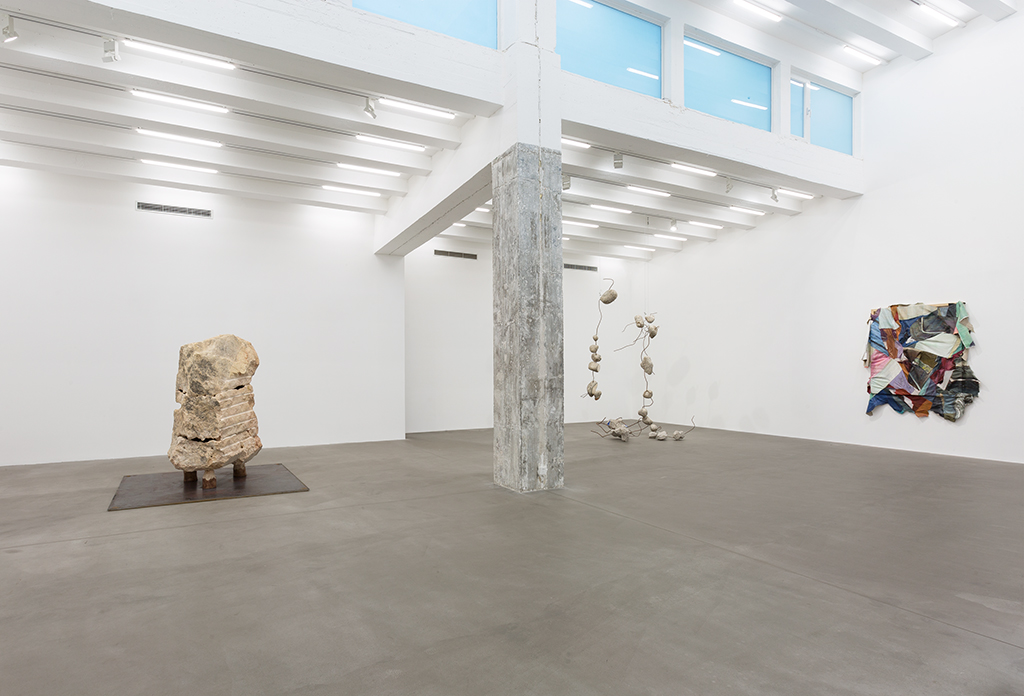
Exhibition View, Hu Qingyan, “Absent & Superfluous”, Galerie Urs Meile, Beijing, China
CAFA ART INFO: Galerie Urs Meile has always adhered to the residency project. Many artists Galerie Urs Meile discovered and supported have gone on to become international representative figures of Chinese contemporary art. While Chinese contemporary art has gone through the polished and precipitated period, are there any new developments and changes in the residency project of Galeries Urs Meile?
Mr. René Meile: The residency project is really a matter very close to the heart of our gallery. Historically, artists from the East and West have always influenced each other and have lead to unexpected new directions in their work. It is this spirit and a firm belief in an universal value of art that keeps us doing this project and hasn’t changed since the beginning.

Rebekka Steiger at the residency studio, Galerie Urs Meile, Beijing, China
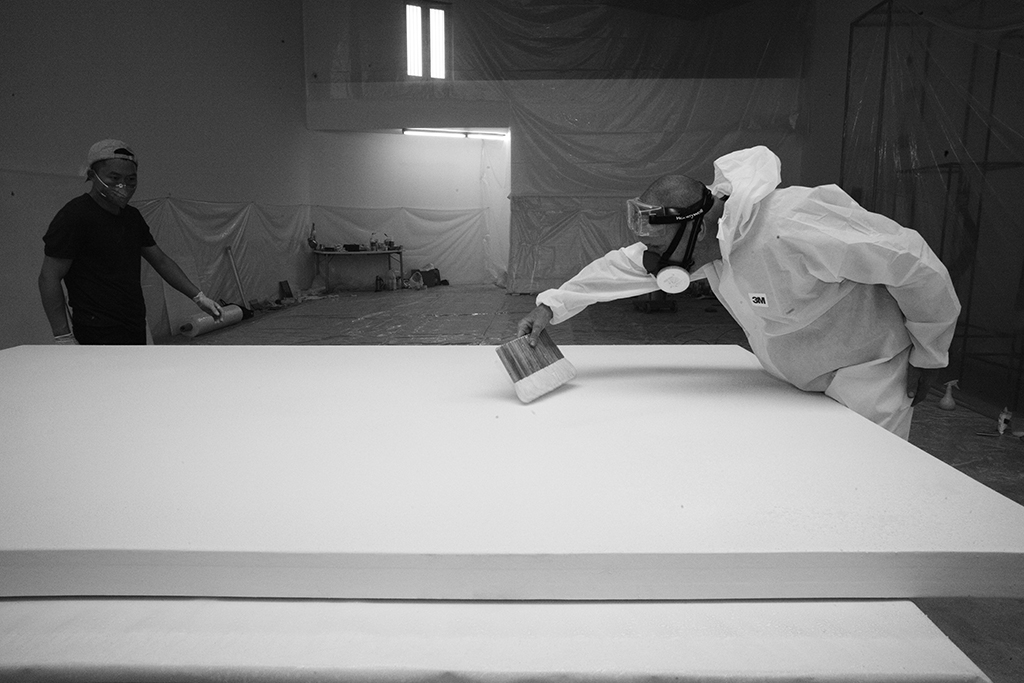
Michel Comte at the residency studio, Galerie Urs Meile, Beijing, China
CAFA ART INFO: Many young artists are affected by the phenomenon of “Internet influencers” and economic thinking and there are so many so-called exhibitions that feature “internet influences”. What do you think of this phenomenon? What do you think of the cultivation of young artists and audiences?
Mr. René Meile: I think there are a few interesting internet influencers and they always have a message to share that goes beyond just their social media platform. They simply use it as a stage for their creative output. Mostly however, they are very much subject to the fast pace of the virtual world; they are damned to deliver new trends without intermission. While I’m sure they generate demands for a lot of products, I doubt that most of them want to participate in a profound and enduring discourse about contemporary art.
The internet is a relatively new phenomenon that is still in the process of becoming part of our daily life in a more intuitive way. I don’t know if this will eventually bring more or less freedom to people’s life but I believe that artists usually consider creative freedom the most valuable condition.

Not Vital at the residency studio, Galerie Urs Meile, Beijing, China
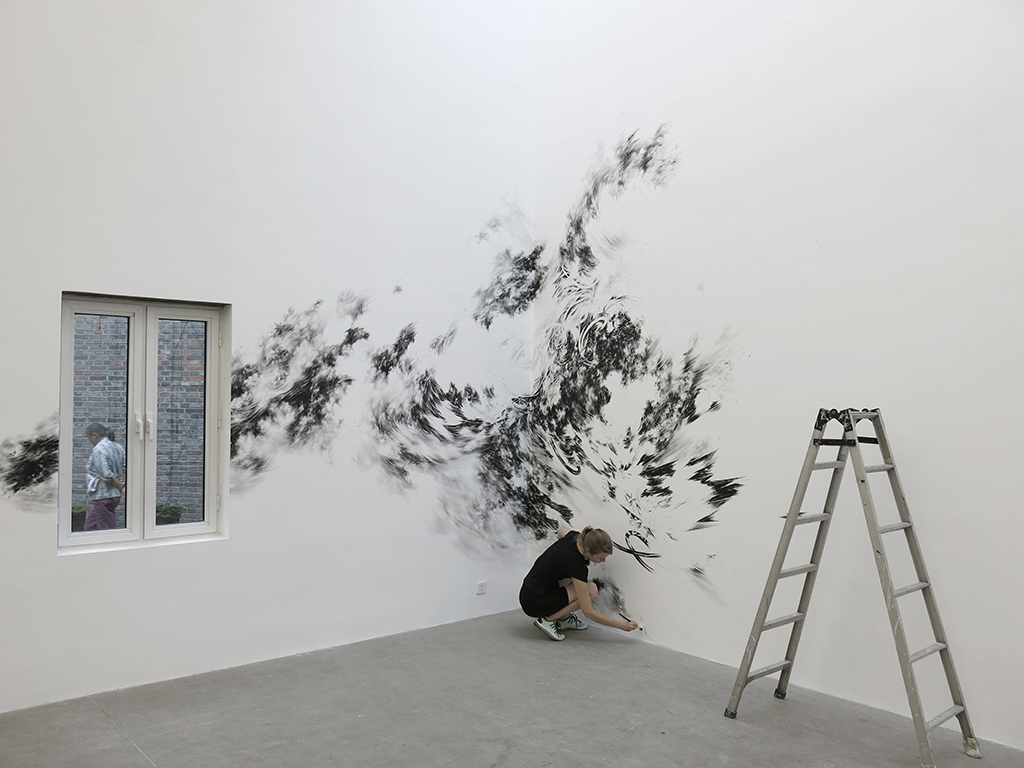
Julia Steiner at the residency studio, Galerie Urs Meile, Beijing, China
CAFA ART INFO: Galerie Urs Meile has always attached importance to the face-to-face communication among artists, viewers, gallery owners and collectors in the gallery. Will you consider increasing the focus on art education in the future? Or increasing the proportion of interactive projects?
Mr. René Meile: Yes, definitely. There are interesting new tools that come quite close to face-to-face communication even without meeting physically in one location. It allows us to share more about our artists new development and, equally important, to learn more about our circle’s views and opinions.
Photo Courtesy of the Interviewee and Galerie Urs Meile.
Note: The views and opinions expressed in this interview are those of the interviewee and do not necessarily reflect the official policy or position of CAFA ART INFO and its employees.




























